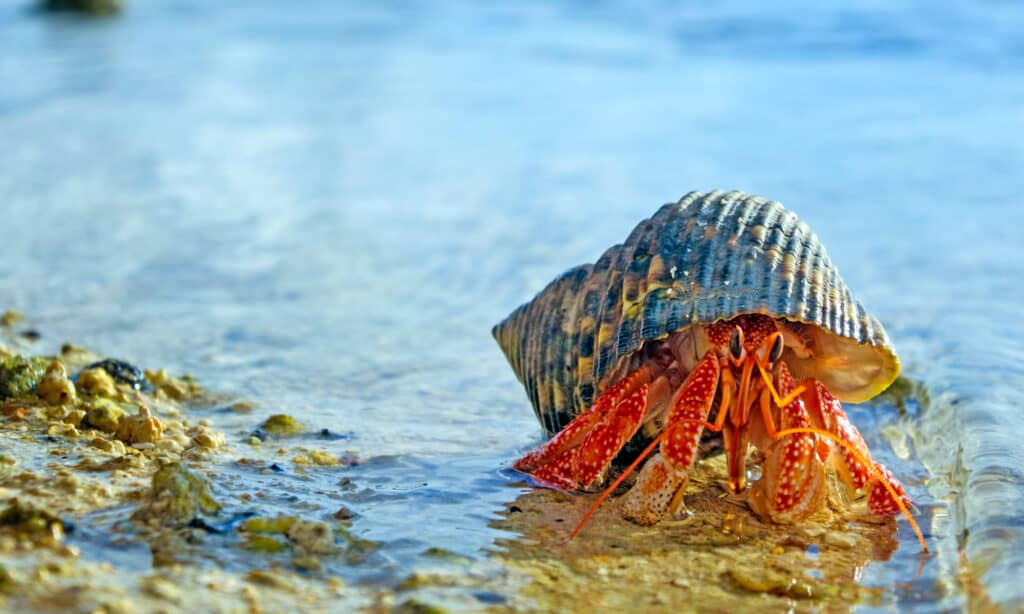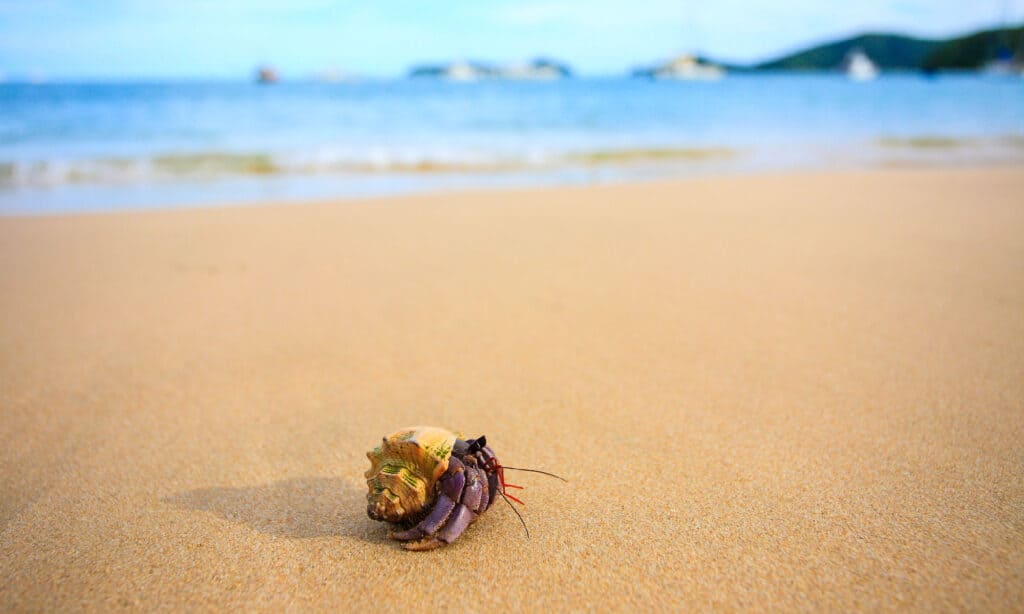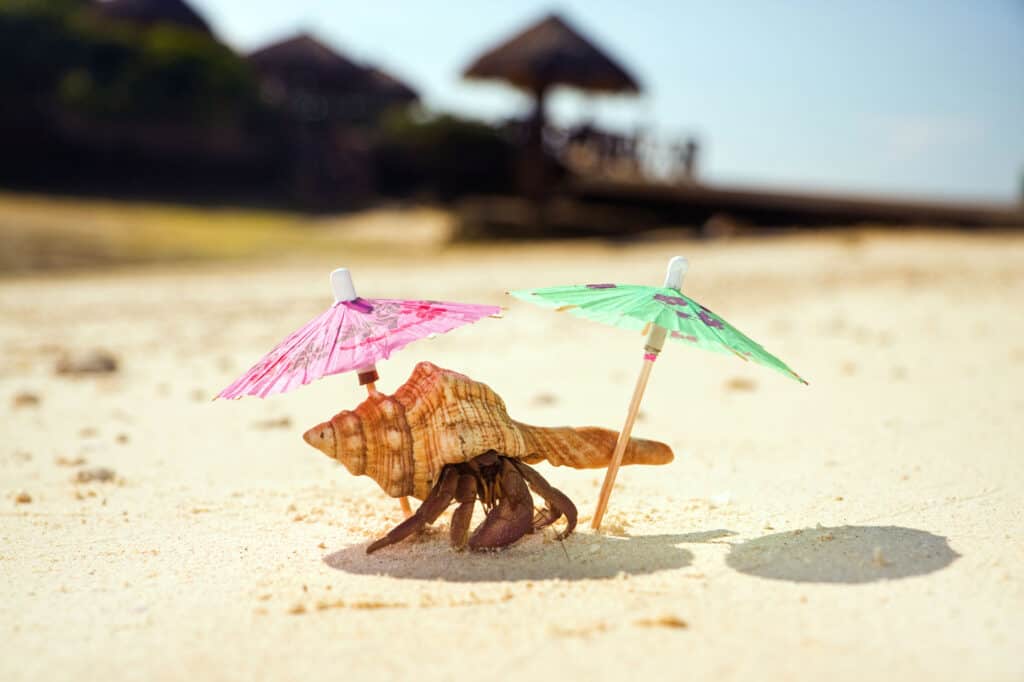Hermit crabs are scavenging crustaceans easily distinguished by their soft, spirally curved abdomens. These crabs aren’t considered true crabs due to their inability to grow their own shells. Consequently, they seek discarded shells by other crabs and often fight to the death over shells.
Some hermit crabs are terrestrially-inclined, spending most of their lives on land, while others live in water. Although these animals are called hermits, they do not live in solitude and are part of an entire community. Despite their weird features, these animals are normal in one respect: they excrete waste. Here’s everything you need to know about hermit crab poop.
Hermit Crabs: The Shell Scavengers

iStock.com/chameleonseye
Hermit crabs are a crustacean group containing over 800 crab species that do not grow their own shells. They have an excellent sense of smell, 360- degree vision, and can hear low and high frequencies. Since the entire group scavenges for shells, there is intense competition since they require larger shells as they grow.
These crabs favor sea shells which may not always be available so they use other types. Crabs that aren’t able to find a shell improvise and use tin cans or any other type of debris that provides cover. Sadly, this can lead to their demise as they may not be able to exit the shell. When this happens, it creates a chain of deaths as the smell of the dead hermit crab will signal other crabs that a shell is available, causing more crabs to die.
Sometimes, when a crab finds an empty shell, it leaves its own shell and goes to try the new one on for size. If it is too large, it goes to its other shell and moves with it back to the too-large vacant shell for up to 8 hours, waiting for a new crab to arrive. If the shell is also big for the new crab, it will also wait in line. The crabs form a line, holding each other, from the largest to the smallest.
This continues, and a line of up to 20 individuals can be formed until a crab that is the right size for the shell arrives. When the crab that is the right size for the new shell comes around, it claims it, leaving its smaller shell behind. The line of crabs then claims the shell from the individual in front of them, moving up in size.
What Do Hermit Crabs Eat?

Katrin85/Shutterstock.com
Hermit crabs are omnivores that eat both plants and animals. Some of the foods they eat are plankton, insects, fish, worms, fruits, and vegetables. Although they are found around salt water, they do not drink it but drink rain water instead.
These animals are scavengers and foragers who rely on their sense of smell to find food. Hermit crabs eat using their chelipeds, which are claws, and their maxillipeds, which are their mouthparts. The chewed food is then passed into their guts.
What Does Hermit Crab Poop Look Like?

iStock.com/wandee007
Hermit crab poop is black or brown, small, and sausage-shaped. Hermit crabs usually poop in their shells. When they’re done, they remove the poop with their back legs. However, their urine is passed through their antennas and isn’t excreted in their shells. Hermit crab poop doesn’t have a noticeable smell.
Do Hermit Crabs Eat Their Own Poop?
Although hermit crabs do not eat their own poop, they aren’t averse to eating others’. They eat animal droppings and even human droppings.
Is Hermit Poop Toxic To Humans?

iStock.com/RobertKacpura
Hermit crab poop might not be toxic to humans, but it contains bacteria that could cause diseases, so if you’re cleaning it up, glove up and thoroughly wash your hands.
Is Hermit Poop Important?
Hermit crab poop serves as a good natural fertilizer as it releases nitrogen which helps plants grow. Also, other animals, such as insects and worms, feed on hermit crab poop. Hermit crab poop is important to wildlife and the environment.
Up Next:
Discover the Largest Hermit Crabs (One is 3 Feet Long!)
Male vs Female Hermit Crab: What are the Differences?
The 10 Largest Crabs in the World
The post Hermit Crab Poop: Everything You’ve Ever Wanted to Know appeared first on AZ Animals.
from Animal News, Facts, Rankings, and More! - AZ Animals https://ift.tt/91v2Lb5